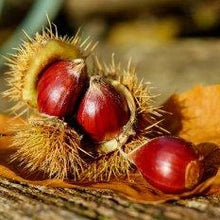
Characteristics
The sweet chestnut is also called sweet chestnut and chestnut tree. Botanists like to speak of Castanea sativa. Heights of up to 35 meters and widths of up to 25 meters can be achieved. Contrary to many assumptions, there is no relationship to the horse chestnut. The sweet chestnut actually belongs to the beech family.
Pollination and foliage
Castanea sativa is monoecious. There is cross-pollination and animal pollination. In addition to a sawn edge, the elongated leaves have a simple leaf structure and an alternating leaf arrangement. You can enjoy the green and white flowers from May to July. The nutty fruits with their brown color and their unmistakable taste ensure a culinary delight.
Soil condition
Castanea sativa prefers gravelly and loamy soil variations with a significant nutrient content. A high humus content is gratefully accepted along with moderately fresh soil moisture. By avoiding a high lime content, you can show the sweet chestnut an extremely noble gesture.
Provenance
The sweet chestnut originally comes from Armenia and worked its way from Asia Minor and in the Mediterranean region. The ancient Romans then paved the way for Castanea sativa into the temperate zone. In the meantime the sweet chestnut has established itself in this country and therefore delights forest scientists with its numerous advantages.
Uses
The common name of sweet chestnut already indicates the high value of this tree species. Castanea sativa forms a very high quality wood. It is ideal for the production of high quality veneers. In the forestry industry, the excellent wood quality is rewarded with adequate remuneration. The prices are higher than with a standard spruce. Therefore, even extremely costly tree care measures are worthwhile. Because of its fruits, the sweet chestnut offers ecological added value. Castanea sativa is therefore ideally suited for creating an ecologically and economically sound production of valuable wood.
You want to plant all year round Here you can find our container plants: Chestnut in the pot.
Please enter your wishes of origin in the comment field.

ORIGIN TABLE
| 808 01 | North German Lowlands |
| 808 02 | Rest of Germany |











